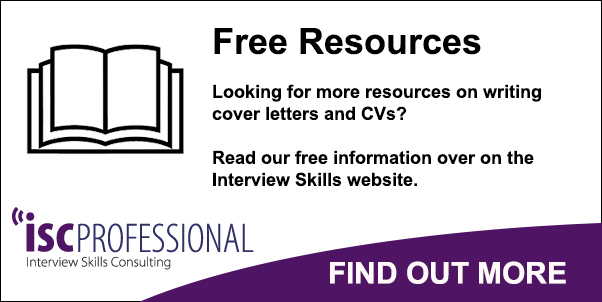How to Structure the Layout of your CV
When you’re applying for a job, it’s important to structure your CV layout in a way that clearly communicates your skills and experiences to potential employers.
To help maximise your chance of an interview, use the following structure for the layout CV, to help businesses recognise why you are the right person for the job.

1. Contact Details
Place your contact details at the top of your CV, so that recruiters immediately know how to get in touch with you.
Include your name, address, phone number and email address. Make sure that this information is up to date and that your email address is a professional address, such as firstname.lastname@gmail.com, rather than one based on a nickname or joke.
Don’t include other information, such as your date of birth, marital status, or nationality. Employers aren’t allowed to take this information into account when considering you for the job, so don’t waste space on it.
2. Professional Profile
Next, include a short paragraph that summarises your key skills and explains why they make you a good fit for the advertised role.
This should be as brief as possible, so cut out pronouns and simply list the key information that an employer needs to know.
3. Key Skills
Although the standard format for a CV is to simply list your educational and professional achievements in chronological order, many job seekers have been having success recently with skill-based CVs.
If you are using this structure, then the next section of your CV should list your key skills. Include each skill as a heading, under which you should include bullet points that give evidence of the skill you claim to have. For example, if you claim to have strong management skills, you might include the following:
Key Skills
Management
- Managed a sales team of 20 employees, all of whom exceeded their sales targets for six consecutive months.
- Supervised implementation of a new IT system, including training staff to use new software.
- Reduced operating costs of the department by 36 percent by improving efficiency.
4. Career History
Next, include a list of the positions you have held during your career. If you’re short on space and have a long career history, omit junior positions that you held decades ago, but make sure your recent career history is outlined in full. On the other hand, people who have little work history, such as graduates, may include voluntary work and work experience placements in this section.
For each position, include dates of employment, the name of the company you worked for, and your job title. Briefly explain your duties in each role, as well as any key achievements not already covered in the skills section.
5. Education
If you’re a recent graduate, this section should feature prominently above the career history section. However, if you left education many years ago, then the education section of your CV should appear below your work history.
In this section, list your qualifications, including dates and the name of the institution where you studied. If you’re a graduate, you don’t need to include your A-level and GCSE results.
6. Other Skills and Achievements
You may want to include a section at the end of your CV that lists qualifications and skills that you haven’t mentioned elsewhere.
For example, you may want to let the employer know that you have a full driving license and that you’re a qualified first aider, as well as listing computer and language skills. This section is for achievements that aren’t directly related to the role, but which employers may still view as assets.
Are you struggling to structure your CV? ISC Professional can help you create an impressive CV and find the job you want.





